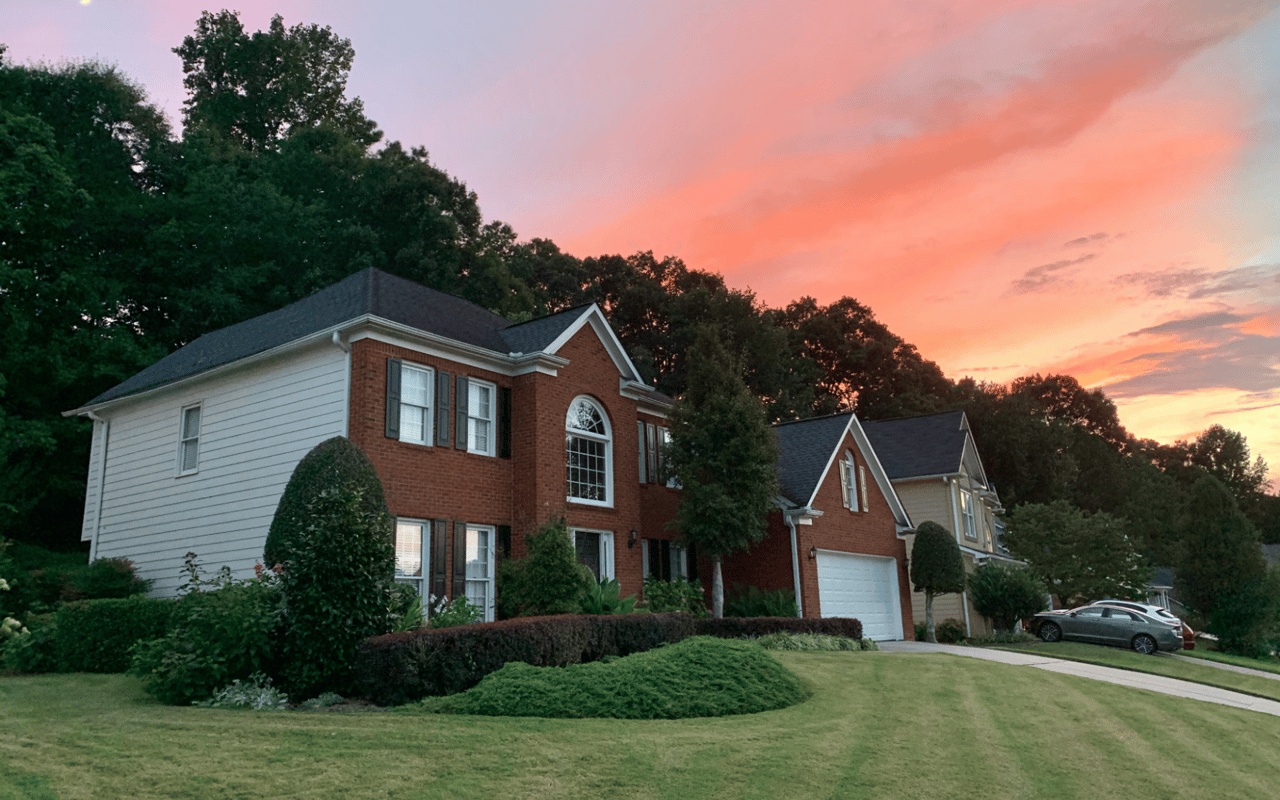Ask Shaun Kennedy to describe the home he and his wife, both in their 30s, bought last year when they moved from Seattle to the suburbs of Boulder, CO, and here’s how he replies:
“It’s a McMansion,” he jokes.
That one word McMansion is enough to fire up a mental image of a home that has at least four bedrooms and four bathrooms (it does); sits in a subdivision more than a dozen miles from the nearest city center (check) and tops out at several thousand square feet (Shaun’s is 3,755 square feet to be exact “on the smaller side,” he likes to point out).
A hint of amusement slips into Shaun’s voice when he talks about the McMansion, in part because they tried and failed to find a smaller house in the suburbs.
And, in part, because the couple’s house symbolizes what Americans simultaneously reject and embrace about homeownership in this country.
On the one hand, there’s our pop culture glorification of the downsized, urban-dwelling, less-is-more lifestyle. HGTV alone airs four different shows about tiny homes.
On the other hand, there’s the data that reveals what more and more millennial buyers, like Shaun and Courtney, truly desire: space, safe neighborhoods, and yes lots of bathrooms.
What the Numbers Say
According to the latest findings from the Zillow Group Consumer Housing Trends Report 2017, the suburbs are the most popular destination for all buyers across all generations.
Millennials are driving this market. Defined by Zillow Group as buyers ages 18 to 37, millennials comprise the largest segment of home buyers today.
Among millennial buyers who purchased homes in the past 12 months, 43 percent currently live in the suburbs, according to the report.
“We’re seeing an emerging pull to the suburbs, especially as cities grow more expensive and have a limited supply of homes for sale,” said Sarah Mikhitarian, an economist at Zillow Group. “As more millennials look to purchase a home, the suburbs are growing more appealing.”
This is a shift from the urban revival that took place during the 2000s, when young, college-educated professionals began pouring into city centers across the U.S., bringing vibrancy into long-neglected downtown cores. The 2008 recession also drew employers downtown to scoop up office space in urban centers as rental rates dropped, according to a 2017 report by Marcus & Millichap, a commercial real estate investment services firm that analyzes office occupancy data.
Now, U.S. Census data points to signs of a reversal.
In 2010, one-third of Americans moved to urban areas (30 percent), while less than half moved to the suburbs (46 percent), according to a Zillow analysis of U.S. Census Bureau data, American Community Survey, 2010-2016.
By 2016, those numbers were starting to trend in opposing directions: 28 percent of Americans moved to urban areas while 54 percent moved to the suburbs, the analysis found.
There is, of course, more land and housing in the suburbs. Yet the decline in the share of people moving to the urban areas signals a renewed interest in the suburbs, Mikhitarian said.
“Underneath this is the simple fact that you get more house for your money once you leave the city,” she said.
What Do Suburban Buyers Want?
Short commutes rank high. Eighty-one percent of millennials and 75 percent of Generation X buyers desire a home close to work, Zillow Group found.
Take, for instance, Shaun and Courtney. While the couple toyed with the idea of living in Denver or Boulder, they ultimately decided against city life because it would have meant a brutal commute for Shaun, whose office is in the suburbs.
They wanted space and a safe neighborhood, and they wanted it all, of course, for a great price. So the suburbs it was.
These priorities mirror what suburban buyers across generations want, Zillow Group’s analysis found.
Most rank safety and ample parking as their top two priorities in a home.
The homes that suburban buyers purchase average three bedrooms, two and a half bathrooms, and 2,100 square feet.
Bathrooms also play a fundamental role in the home-buying process for suburban buyers. More than half 58 percent say it is a requirement that a home has its preferred number of bathrooms.
While millennials may be starting their families, many Gen X-ers have young children under 18 living at home. As these children grow from toddlers to teenagers, “having an extra bathroom or two quickly goes from a ‘nice-to-have to a ‘necessity,’” the report stated.
An Agent’s View
Bic DeCaro, a Premier Agent in Great Falls, VA, near Washington, D.C., said she’s seen the shift to the suburbs happening firsthand over the past 18 years.
When she first became an agent in the early 2000s, many of her clients were first-time buyers looking to purchase starter homes either in D.C. or Arlington, VA.
Then her clients got married, got promotions, had kids. They came to her again years later, this time wanting bigger homes in better school districts and yards for dogs and kids, she said.
That desire is nothing new. The American Dream has long been synonymous with the white picket fence and its attendant trappings.
What was changing, however, was the suburban landscape on which this dream was built.
Live, Work, Play
As Americans began to demand more walkable communities, more and more mixed-use town centers complete with restaurants, shopping, movie theaters, and housing started popping up in suburban cities across the country.
At the same time, office rents in urban cores got more expensive post-recession, making the suburbs a more affordable option for employers, according to the 2017 Marcus & Millichap report.
For employers, too, the suburbs have become even more attractive as millennials, a sought-after talent pool, increasingly choose to live there, the report stated.
Bic, whose client base primarily consists of buyers and sellers in the D.C. metro area, said the confluence of these forces has fueled increased demand for the suburban home.
Long commutes that once involved schlepping from bedroom communities to downtown offices are becoming less and less of a consideration, she said.
“When you’ve got the jobs, the restaurants, shopping, and good schools, the suburbs make sense,” she said. “You have that sense of community. It’s not just a place to sleep anymore.”
In Suburbia
Piper Ryan and her husband, Sean, have moved every few years over the past decade for Sean’s career.
The couple and their family bought a house last year in Great Falls, VA, and chose Bic to be their agent, in part because of Bic’s expertise in the suburban market.
With each home purchase over the past decade, Piper said, she and her husband have picked the suburbs. The choice made sense.
They needed space for their big, extended family, enough bedrooms for visitors during the holidays, good schools for the children, and proximity to Sean’s office and the airport. Also, Piper said, she loves nature and wide-open spaces.
“If we were in our 20s, downtown would be great,” she said. “But with kids, I want them to have room to run outside and play.”
From City Life to the ‘burbs
Speaking from his suburban office in Colorado, Shaun Kennedy recalled the time when he and Courtney first went to visit homes in Broomfield, which is about 15 miles outside of Boulder.
They prioritized their wish list. Courtney works from home, but with Shaun’s office located in Broomfield, living in Boulder or Denver was out of the question, he said.
They also wanted a large kitchen, backyard space for their two dogs, and a functional open layout.
The couple was living in Seattle at the time; before that, they lived in D.C. and Denver. They’d grown accustomed to city life and making the most of small spaces.
Then their agent took them to showings in Broomfield.
“Houses here are So. Darn. Big,” Shaun said. “You have to take a search party to visit the whole house.”
After two weeks of looking, they made an offer on a house adjacent to a golf course. Unlike their classic brick Tudor in Seattle, the Broomfield house was in a new, mostly uniform development.
That was an adjustment, purely from an architectural standpoint, Courtney said. In the city, they’d gotten used to “the diversity of seeing modern houses next to 100-year-old houses.”
Still, they loved the floor plan in the suburban house they found, as well as the large kitchen and guest en suite for frequent visitors. Plus, it was a 15-minute commute for Shaun.
Courtney said that even though she and Shaun miss aspects of urban life, like having great restaurants minutes from their door, they don’t worry about crime or their car getting vandalized where they live.
They entertain more now and invite friends to cookouts on their patio while their dogs play in the yard.
“There are trade-offs,” Courtney said. “There always are.”





